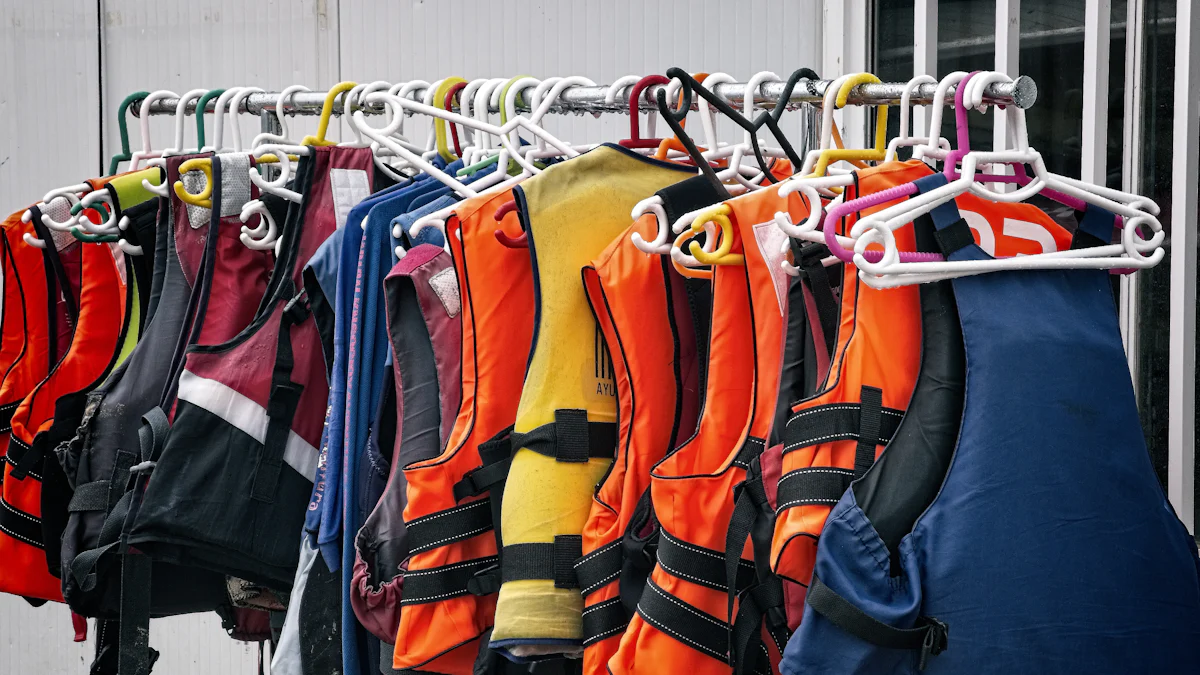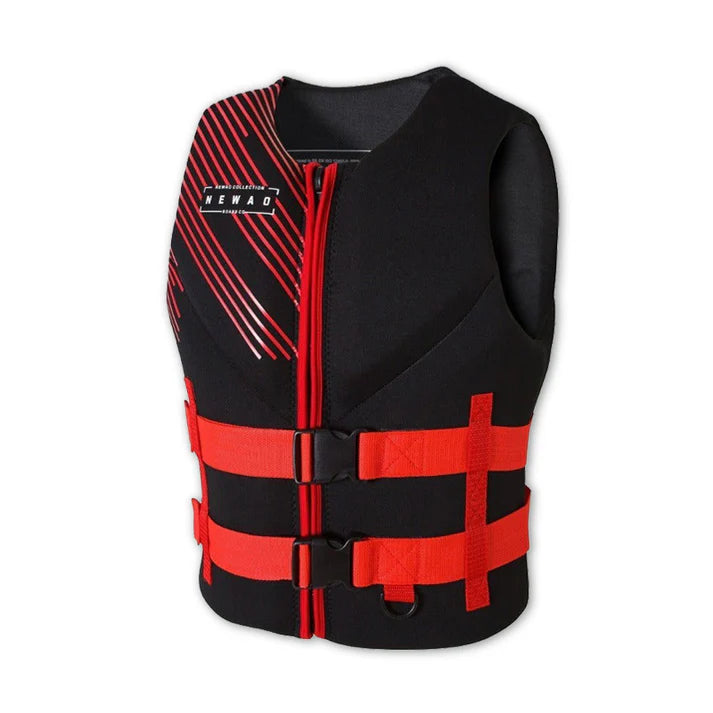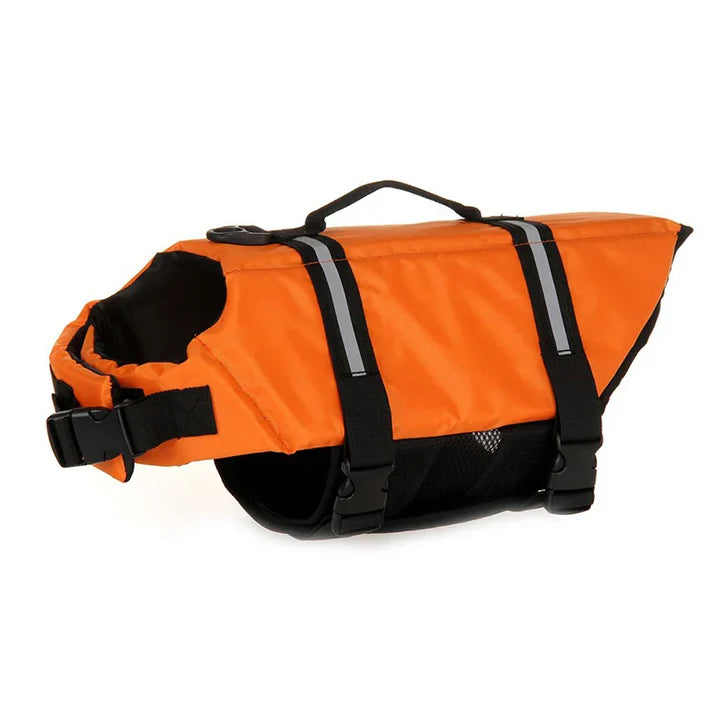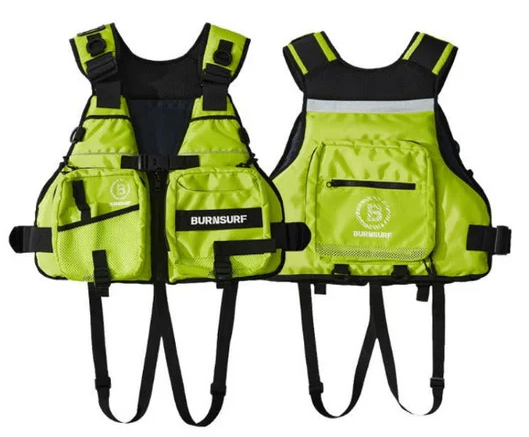Life Jacket Maintenance Tips for Long-Lasting Use

Your life jacket is more than just a piece of gear—it’s a lifesaver. Regular maintenance ensures it performs when you need it most. Neglecting care can lead to hidden damage, reducing its effectiveness in emergencies. Did you know that 84% of drowning victims weren’t wearing a life jacket? Even worse, some fatalities occur because of faulty or poorly maintained jackets. Proper cleaning, storage, and inspection not only extend its lifespan but also keep you safe on the water. Taking care of your life jacket isn’t just smart—it’s essential.
Key Takeaways
- Regular maintenance of your life jacket is essential for safety; neglect can lead to dangerous failures during emergencies.
- Clean your life jacket with mild soap and fresh water to prevent material degradation; avoid harsh chemicals and machine washing.
- Store your life jacket in a cool, dry place away from direct sunlight and sharp objects to maintain its integrity.
- Conduct routine inspections for tears, holes, and damaged components to catch issues early and ensure reliability.
- Replace your life jacket if you notice damaged foam, broken straps, or if it no longer meets safety standards.
- Prioritize maintenance to extend the lifespan of your life jacket, saving you money and ensuring your safety on the water.
- Stay informed about safety standards and manufacturer guidelines to ensure your life jacket remains compliant and effective.
Why Life Jacket Maintenance Matters
Your life jacket is your first line of defense on the water. It’s not just a piece of equipment—it’s a lifesaving tool. Proper maintenance ensures it works when you need it most. Neglecting care can lead to serious risks, while regular upkeep offers significant benefits.
Risks of Neglecting Your Life Jacket
Failing to maintain your life jacket can have dangerous consequences. Over time, exposure to heat, sunlight, and moisture can degrade its buoyant material. For example, some life jackets have failed during emergencies because their foam or inflatable bladders were damaged. Holes, tears, or worn-out straps can also compromise its ability to keep you afloat.
According to the U.S. Coast Guard, 76% of fatal boating accident victims drowned, and many weren’t wearing life jackets. Even worse, some fatalities occurred because the jackets were faulty or improperly maintained.
Neglecting your life jacket doesn’t just put you at risk—it can also lead to costly replacements. A poorly cared-for jacket won’t last long, forcing you to buy a new one sooner than necessary.
Benefits of Proper Life Jacket Care
Taking care of your life jacket isn’t just about extending its lifespan. It’s about ensuring your safety and meeting essential standards.
Enhances Safety in Emergencies
A well-maintained life jacket performs reliably when you need it most. Emergencies on the water happen fast. You won’t have time to check for damage or fix broken straps. Keeping your jacket in top condition ensures it’s ready to save your life at a moment’s notice.
The U.S. Coast Guard estimates that life jackets could have saved over 80% of boating fatality victims. Regular maintenance ensures yours will work when it matters.
Prolongs the Life of Your Life Jacket
Proper care helps your life jacket last longer. Cleaning it after use, storing it correctly, and inspecting it regularly prevent wear and tear. This means you won’t have to replace it as often, saving you money in the long run.
Ensures Compliance with Safety Standards
Life jackets must meet specific safety standards to be effective. Damaged or poorly maintained jackets may no longer comply with these requirements. Regular inspections help you catch issues early, ensuring your jacket remains up to code. This is especially important if you’re boating in areas where safety checks are mandatory.
By maintaining your life jacket, you’re not just protecting yourself—you’re also protecting your investment. A little effort goes a long way in keeping you safe and your gear reliable.
Essential Maintenance Tips for Your Life Jacket

Taking care of your life jacket doesn’t have to be complicated. A few simple steps can keep it in top condition, ensuring it’s ready when you need it most. Let’s dive into the essential maintenance tips that will help you protect both your safety and your investment.
Cleaning Your Life Jacket
Keeping your life jacket clean is crucial. Dirt, oils, and salt can weaken its materials over time. Regular cleaning not only maintains its appearance but also ensures it performs as intended.
Use Mild Soap and Fresh Water
Always clean your life jacket with mild soap and fresh water. Harsh detergents can damage the fabric and buoyant materials. Gently scrub the surface to remove dirt, sunscreen, and sweat. This simple step prevents buildup that could compromise its effectiveness.
Avoid Harsh Chemicals and Machine Washing
Never use bleach, strong chemicals, or a washing machine. These can degrade the foam and fabric, reducing the jacket’s buoyancy. Stick to handwashing for the best results. Follow the manufacturer’s instructions for specific cleaning guidelines.
Rinse Thoroughly After Saltwater Use
Saltwater can be particularly harsh on your life jacket. After every use in the ocean, rinse it thoroughly with fresh water. This removes salt deposits that can cause stiffness and wear. Let it air dry completely before storing it.
Pro Tip: Clean your life jacket monthly during boating season to prevent oils and contaminants from breaking down its materials.
Proper Storage Practices for Life Jackets
How you store your life jacket matters just as much as how you clean it. Proper storage keeps it in good shape and ready for action.
Store in a Cool, Dry Place
Always store your life jacket in a cool, dry location. Excessive moisture can lead to mold and mildew, while heat can warp the foam. A well-ventilated area is ideal for maintaining its integrity.
Avoid Direct Sunlight and Extreme Temperatures
Prolonged exposure to sunlight can fade the fabric and weaken its structure. Keep your life jacket out of direct sunlight when not in use. Extreme temperatures, whether hot or cold, can also damage the materials, so avoid leaving it in places like car trunks.
Keep Away from Sharp Objects or Heavy Items
Sharp objects can puncture the fabric, and heavy items can compress the foam, reducing buoyancy. Store your life jacket on a hanger or a dedicated shelf to avoid unnecessary damage.
Quick Tip: Hang your life jacket to dry after each use, but make sure it’s out of direct sunlight to prevent fading.
Inspecting Your Life Jacket for Damage
Regular inspections are key to ensuring your life jacket stays reliable. Small issues can quickly turn into big problems if left unchecked.
Check for Tears, Holes, or Frayed Straps
Examine the fabric for any visible damage, such as tears, holes, or frayed straps. Even minor wear can affect its performance. If you spot any issues, repair them immediately or replace the jacket if necessary.
Test Buckles, Zippers, and Fasteners
Make sure all buckles, zippers, and fasteners work properly. These components are critical for keeping the jacket secure during use. Broken or malfunctioning parts should be fixed or replaced without delay.
Look for Signs of Mold, Mildew, or Fading
Inspect your life jacket for mold, mildew, or discoloration. These signs indicate improper storage or prolonged exposure to moisture. Mold and mildew can weaken the materials, so clean the jacket thoroughly if you notice any growth.
Did You Know? Regular inspections not only ensure safety but also help you catch issues early, saving you from costly replacements.
By following these maintenance tips, you’ll keep your life jacket in excellent condition. A little effort goes a long way in ensuring it’s always ready to protect you on the water.
When to Replace Your Life Jacket

Knowing when to replace your life jacket is just as important as maintaining it. Even with proper care, wear and tear or outdated certifications can render it unsafe. Let’s explore the key signs that indicate it’s time for a replacement.
Identifying Signs of Wear and Tear
Your life jacket faces constant exposure to water, sunlight, and physical stress. Over time, these elements can take a toll on its materials and functionality. Here’s what to watch for:
Damaged Foam or Buoyancy Material
The foam or buoyancy material inside your life jacket is its most critical component. If the foam feels hard, cracked, or uneven, it’s no longer providing the lift you need. A life jacket with compromised buoyancy won’t keep you afloat in an emergency. Run your hands over the jacket to check for stiffness or deformities. If you notice any, it’s time to replace it.
Broken or Missing Straps and Buckles
Straps and buckles ensure your life jacket stays securely fastened. If they’re torn, frayed, or missing, the jacket can’t do its job. Test each buckle and strap by pulling gently but firmly. If they don’t hold or show signs of wear, don’t risk it—replace the jacket immediately.
Persistent Mold or Odor
Mold and mildew aren’t just unpleasant; they weaken the fabric and foam. If your life jacket smells musty or shows visible mold spots that don’t go away after cleaning, it’s no longer safe to use. Persistent odors often indicate deeper damage that cleaning can’t fix.
Quick Tip: Regular inspections can help you catch these issues early, but once they appear, don’t hesitate to invest in a new life jacket.
Understanding Expired Certifications
Life jackets must meet specific safety standards to remain effective. Over time, certifications can expire, especially if the jacket has been heavily used or poorly maintained. Here’s how to stay compliant:
Follow Manufacturer’s Guidelines
Always check the manufacturer’s instructions for the recommended lifespan of your life jacket. Most manufacturers include this information on the label or in the owner’s manual. If your jacket has exceeded its suggested lifespan, replace it—even if it looks fine.
Follow Manufacturer’s Guidelines
Always check the manufacturer’s instructions for the recommended lifespan of your life jacket. Most manufacturers include this information on the label or in the owner’s manual. If your jacket has exceeded its suggested lifespan, replace it—even if it looks fine.
Replace if It No Longer Meets Safety Standards
Safety standards evolve, and older life jackets may not meet current requirements. For example, the U.S. Coast Guard regularly updates its guidelines. If your jacket doesn’t have a current certification or fails a safety inspection, it’s time for an upgrade. Staying up-to-date ensures you’re protected and compliant with local regulations.
Pro Tip: Visit the U.S. Coast Guard website periodically to check for recalls or updated safety notices. This simple step can help you avoid using an outdated or unsafe life jacket.
Replacing your life jacket might feel like an inconvenience, but it’s a small price to pay for your safety. A reliable, certified jacket gives you peace of mind and ensures you’re prepared for any situation on the water.
Taking care of your life jacket is one of the simplest ways to protect yourself on the water. Regular cleaning keeps it free from dirt and salt that can weaken its materials. Proper storage prevents damage from sunlight, moisture, and sharp objects. Routine inspections help you catch small issues before they become big problems. By prioritizing maintenance, you ensure your life jacket stays reliable and effective when you need it most. If it’s damaged or outdated, don’t hesitate—replace it. Your safety is worth the effort, and a well-maintained life jacket could save your life.









